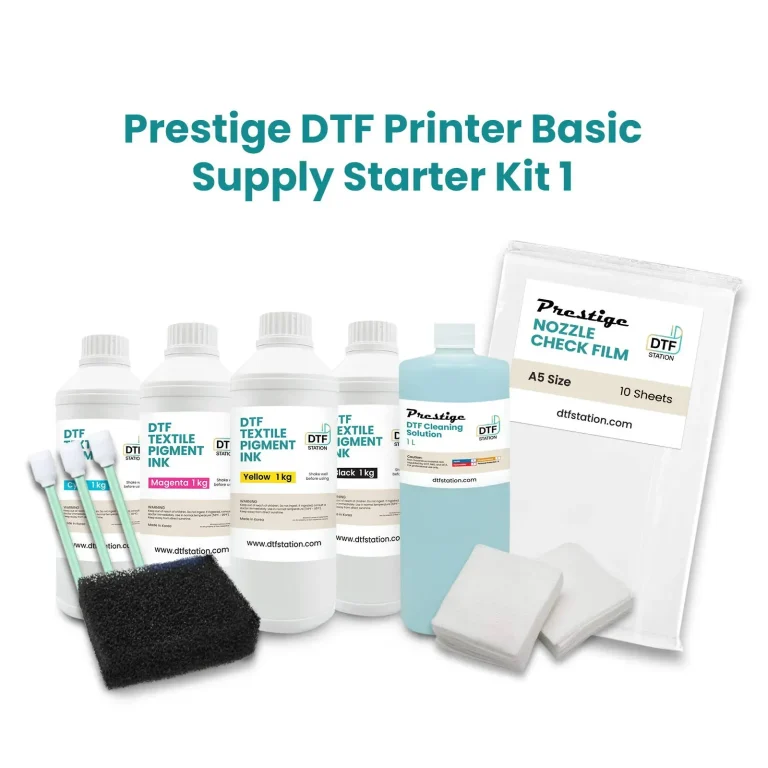DTF supplies are revolutionizing the printing industry, particularly within the apparel sector. This innovative Direct-to-Film (DTF) printing technology enables businesses to produce vibrant, intricate designs effortlessly and with impressive durability. Unlike conventional printing methods, DTF offers a unique process where artistic designs are printed onto high-quality films that can be easily heat-pressed onto any fabric. As the market for custom apparel continues to expand, understanding the nuances of DTF supplies, including films and inks, becomes essential for both established and new businesses. This article delves into the key differences that set various DTF supplies apart, ensuring you have the knowledge to make well-informed choices for your printing needs.
The exploration of DTF supplies reveals a dynamic landscape of printing materials that cater to creative industries. Known as Direct-to-Film printing, this technique has emerged as an alternative to traditional methods, allowing for the direct application of customized designs onto transfer films. By employing advanced DTF printing technology, manufacturers are capable of delivering high-quality apparel with intricate details. As we examine the critical aspects of DTF films, inks, and other essential components, it becomes clear that a thorough comparison of these supplies is beneficial for anyone aiming to thrive in the competitive world of custom printing.
The Basics of DTF Printing Technology
DTF printing technology is revolutionizing the way we approach garment decoration. Unlike traditional methods, DTF utilizes a specialized film that allows for vibrant colors and intricate designs to be transferred onto fabrics with unprecedented ease. The process begins with printing a design onto this film using high-quality ink, which is then treated with adhesive powder and heat-pressed onto the garment. This method not only enhances durability but also maintains the integrity of complex designs, making it an ideal solution for short-run productions required by modern apparel businesses.
Moreover, DTF printing offers flexibility in materials and applications, making it suitable for a wide range of fabrics. From cotton to polyester blends, the ability to adapt to various substrates opens up vast creative possibilities for designers. The industry has seen rapid growth in awareness and adoption of this technology, especially as businesses seek efficient and cost-effective methods to meet consumer demands for personalized apparel.
Frequently Asked Questions
What are the key advantages of using DTF supplies for printing?
DTF supplies offer significant advantages including the ability to produce vibrant, high-quality prints with intricate designs directly onto fabric. This technology excels in short-run production, as well as durability, allowing prints to withstand multiple washes without fading. DTF printing technology also supports a wide variety of fabrics, making it a versatile choice for businesses.
How does film quality impact DTF printing results?
The quality of DTF films is crucial for achieving superior printing results. High-grade DTF films ensure vibrant colors and enhanced durability, resisting wear over time. When selecting DTF supplies, it’s essential to consider film thickness and transparency, as these factors significantly affect the overall print quality and longevity.
What types of inks are best for DTF printing?
When choosing DTF supplies, the inks used are critical to achieving high-quality results. Opt for suppliers that provide high-quality pigments that promote brightness and vivid color representation. Additionally, select inks that enhance flexibility and wash resistance, as these aspects are vital for consumer apparel’s longevity and performance.
How important is the adhesive powder in DTF printing?
The adhesive powder is a pivotal component in DTF printing that directly influences print durability and quality. High-quality adhesive powders help prevent fading and improve adhesion, essential for long-lasting prints. Choosing effective DTF supplies includes selecting an adhesive that simplifies application while ensuring a strong bond.
What printer technology should I look for when investing in DTF supplies?
Investing in modern DTF printers is essential for optimizing your printing operations. Look for printers that feature automated settings, advanced ink management systems, and high-resolution capabilities, as these will improve workflow efficiency and output quality. Selecting the right printer technology is key to maximizing the benefits of your DTF supplies.
Are there eco-friendly options available in DTF supplies?
Yes, there are increasingly available eco-friendly DTF supplies, including biodegradable films and non-toxic inks. Many suppliers are now focusing on sustainable practices, which not only cater to environmentally-conscious consumers but also enhance brand reputation and appeal. This trend in DTF printing technology supports a growing demand for responsible production methods.
| Key Aspect | Details |
|---|---|
| Film Quality | Different formulations impact durability, thickness, and ink interaction, affecting wash resistance and overall results. |
| Inks Used | Quality of pigments influences color vibrancy and drying time; formulations improve flexibility and wash resistance. |
| Adhesive Powder | Varies by manufacturer; high-quality powders prevent fading and improve application processes, enhancing durability. |
| Printer Technology | Specific DTF printers with advanced features help in producing high-quality prints with operational efficiency. |
Summary
DTF supplies play a pivotal role in the evolution of printing technology, particularly in the realm of custom apparel. Understanding the nuances between different DTF supplies is essential for businesses aiming to thrive in this dynamic market. By selecting high-quality films, vibrant inks, effective adhesive powders, and advanced printer technology, companies can ensure that their products stand out. Furthermore, recent innovations, including eco-friendly options and enhanced training programs, highlight a commitment to sustainability and customer engagement. As the demand for custom apparel grows, staying informed about the intricacies of DTF supplies will be fundamental to achieving long-lasting success in the printing industry.

